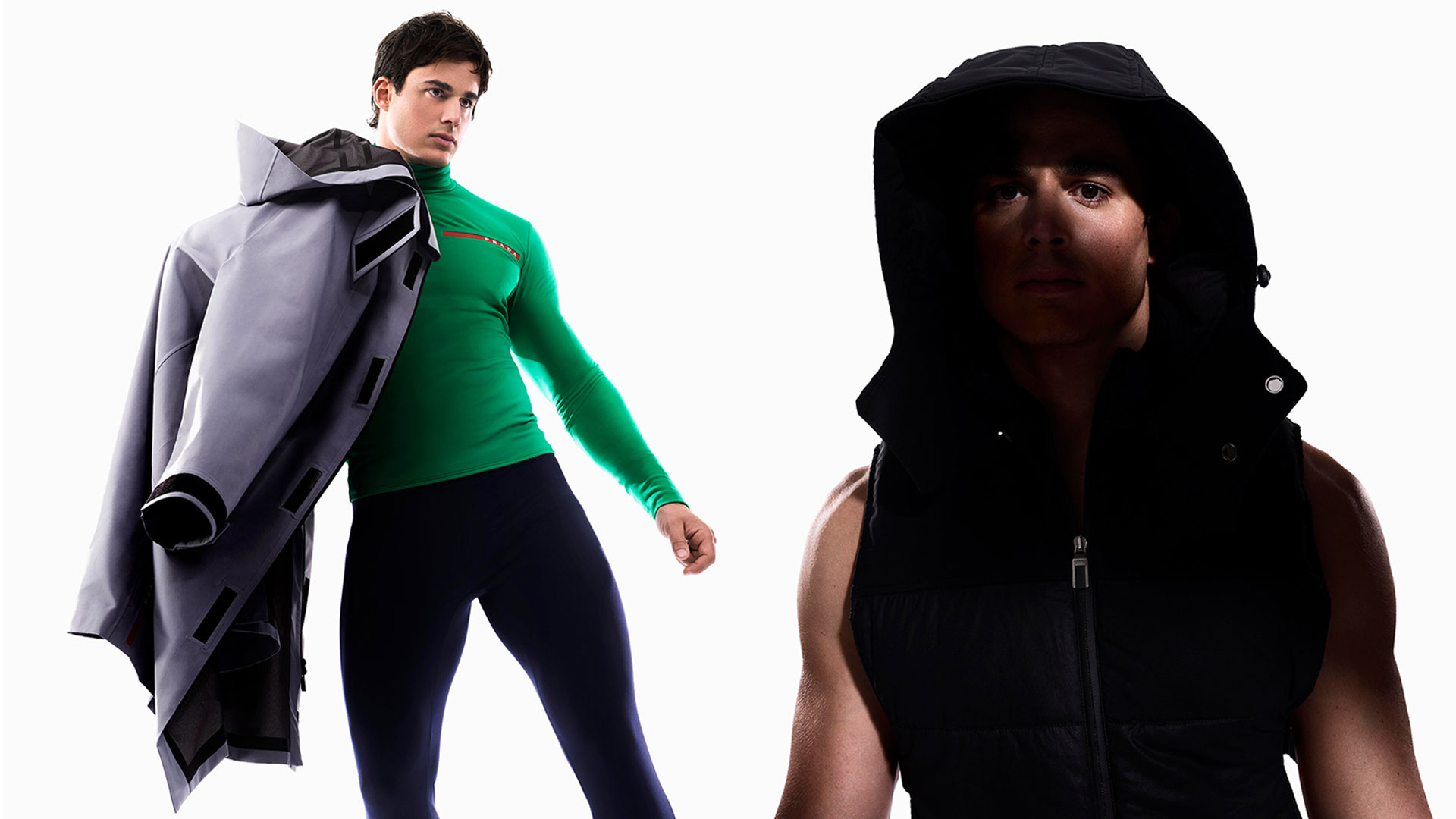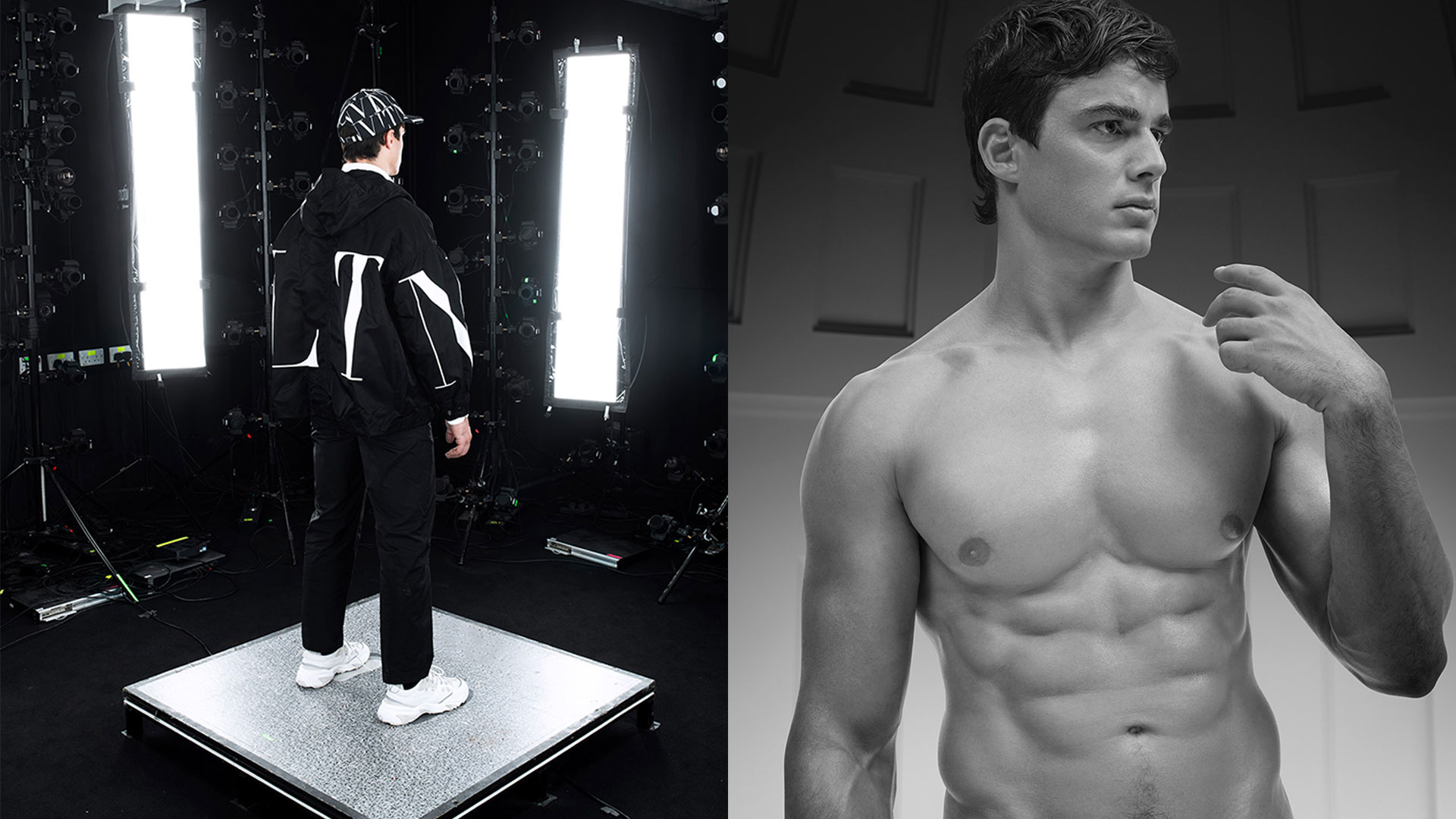We worked with GQ Italia to launch its first-ever lenticular printed cover. The editorial, titled ‘New Renaissance’, looks at rebirth and recovery, digitally fusing photography and 3D to blend art, technology, and fashion. Since this was our first editorial shoot, once lockdown measures were more lifted, we wanted to enlighten readers and make them think of new ways of expression. Read the full cover story text by scrolling further.

Our translation of the Italian Cover Story text: Pinewood Studios, thirty kilometers northwest of central London: the Hollywood of Europe. The Thames in the distance instead of the Pacific and a long road in the heath instead of the dusty Los Angeles highway. For the spectacle, however, a few differences: James Bonds, Star Wars, Harry Potter, The Hobbit, Full Metal Jacket, Eyes Wide Shut were born in these studios. The list would be much longer and deserve a dedicated piece – Europeans are much better at celebrating the myths of others than at cementing their own – but it is the latest addition to the list that we are here to tell: the magazine you’re holding. Yes this GQ cover story was also produced in the European Mecca of visual arts.

In COVID times, thanks to technologies that less than a year ago were still unapproachable, and with the inspiration of the Renaissance symbolized by Michelangelo’s David, it carved out a path. The statue in flesh and blood is called Pietro Boselli. We, that is Jonas Hegi and Julien Simshäuser, digital artists and artisans of the imagination, founders four years ago of Builders Club, the creative studio that created this work for us. They produce wonders of work to look at, in which to navigate and get lost, and it is frankly difficult to provide a more precise definition: “We create a new visual language, we experiment to confuse the contours of what exists and could exist, of what is and is not there is.

We play with reality and imagination, pushing the viewer to ask questions”, explains Hegi. He was experimenting with directing, photography, and the power of digital images when five years ago he met Julien, a virtual artist, in an Italian style pizzeria (and where if not?). They decided to found Builders Club, selecting a team of cutting-edge collaborators, and placed it in Hackney, the epicenter of London creativity; from then on, the climb among the most popular in the world was rapid. Hermès and Adidas, Nike and Chanel, Tiffany, and Yves Saint Laurent, just to name a few, have chosen them to create dreamlike journeys between images and identities. “What characterizes us is that others present art – we do it – we materialize ideas because we are inside both the old and the new world, we merge cultural heritage and contemporaneity, manual and computer, sculpture and 3D software”, the two say.





In the middle, a half-naked Marcantonio and two unrecognisable people, harnessed from head to toe in insulating white overalls, their faces shielded by plexiglass visors: they are the stylist and the make-up artist, whose work is impossible without contacts, however safe, between them and with the model. The cover you have in your hands is the result of twelve hours of shots on that set, plus a generous month of subsequent processing. “The work started before we arrived in Pinewood. Lenticular printing requires that the 3D render of David and that of Pietro Boselli be superimposed.



Creating a virtual setting, playing with the components until you find the perfect composition, freezing it in a file that once printed on paper, transports the union between the virtual and the real on the page. The image prompts us to ask ourselves – what is virtual and what is real, and above all, how much our notion of reality broadens once the concept becomes permeable, as in these shots. “There is a kind of red line in our work as if we were pushing the border a little further and further in a subtle way. We make our audience feel safe, in a territory they know, and then we move it to a dimension that is not expected “, the founders of Builders Club try to interpret.
The health caution that will inspire each choice for a long time could favour the transition; the recession that awaits us – the two admit – could complicate it. Although “the idea of replacing or supporting traditional fashion shows with something new and universally accessible to the public is somewhat more democratic”, they reflect. And the immersion in the potential of digital art, for an industry that has perhaps unparalleled economic and socio-cultural weight, is more than a good opportunity to reinvent itself. “We need new forms of communication, new ways of expression.

The health caution that will inspire each choice for a long time could favour the transition; the recession that awaits us – the two admit – could complicate it. Although “the idea of replacing or supporting traditional fashion shows with something new and universally accessible to the public is somewhat more democratic”, they reflect. And the immersion in the potential of digital art, for an industry that has perhaps unparalleled economic and socio-cultural weight, is more than a good opportunity to reinvent itself. “We need new forms of communication, new ways of expression. Art, including digital art, is an incredibly powerful tool: it has the ability to make people think, to bring the world into a more complex dimension. And at a time like this, crossed by these tensions and with these governments, it would be a shame to miss the opportunity to do it,” said the pair of artists. Needless to say, we agree. That’s why you have this product in your hands.